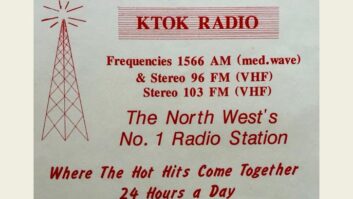When the unexpected happens and natural disasters are on their doorsteps, what recovery plans do radio stations have in place not only to bear the brunt of the damage but to continue providing essential services to the public?
During the wrath of Hurricane Ian, an American Tower site near Fort Myers Beach was flooded, and transmitters serving Renda Broadcasting, Fort Myers Broadcasting and Relevant Radio were destroyed.
One of those stations is Renda’s WJGO(FM), for which Kevin Trueblood is a contract engineer.
Trueblood said even before the hurricane overtook the site, WJGO had already lost their Harris HPX transmitter to a disastrous fire at the site just a few weeks prior. “All of their equipment was a total loss,” he said.
By the time WJGO came up with another transmitter and installed it on the opposite side of the room where the fire hadn’t reached, another disaster shook the station.
“We literally just got that site back on the air and then three weeks later the hurricane put it under water,” said Trueblood.
He said, at present, WJGO is still off the air, looking to locate its transmitter site elsewhere.
Earlier this week, Radio World spoke with Beasley Media’s Mike Cooney about the same fire. Beasley normally operated its local stations from the American Tower site. Beasley had relocated from there after the fire caused $800,000 in damage.
So, as Hurricane Ian rolled through with its fierce wind and rain, Beasley’s operations were relatively safe — just 10 miles away at its aux site in Estero — while the American Tower site was completely flooded.
“I give a lot of credit to Mike,” said Trueblood, “because the two stations they lost in the fire, they’ve been operating from the Estero studio ever since without skipping a beat.”
Trueblood himself rode out the storm at the WGCU(FM) studios — also based in Estero — where he is associate general manager of technology and operations. He said the NPR affiliate never lost power nor did it report any damage to its facilities. The transmitter site was running on generator power until Oct. 4, but “besides that we were in really good shape,” he said.
Trueblood said Hurricane Ian highlighted the need for every station to have a disaster recovery plan — something Beasley Media and WGCU were not lacking.
“At WGCU, my full-time job, we had the local Scripps Fox affiliate move into our studios due to safety concerns at theirs in Cape Coral,” said Trueblood. “It was a planned and rehearsed move that had bumps at first.”
“Bumps” like cramped spaces, limited air-conditioning and no running water. “It was uncomfortable, but we pulled through.”
He said Scripps puts a big emphasis at the corporate level on having a strong disaster recovery plan in each market. He said WGCU and Scripps had that joint agreement for four years before using it for the first time during Ian.
[Sign Up for Radio World’s SmartBrief Newsletter]
In the days following Ian, Trueblood said an inconsistent fuel supply and limited access to transmitter sites/studios due to flooding still hinder Florida broadcasters in their recovery efforts.
However, throughout it all, he says he couldn’t be prouder of the radio broadcasters in the area — and the radio medium as a whole — for their extensive coverage before, throughout and after the storm.
When cellphones didn’t work and internet was down, he said radio served as a “literal lifeline to people in a time of crisis.”
“More than anything, when there’s disasters like this, there’s just a common spirit between broadcasters,” said Trueblood. “The competition lines are eliminated. You have competing stations that will come together, because in a time like this, you’re serving the public interest. We’re all in the same boat.”
[Check out the rest of Radio World’s Hurricane Ian coverage]







